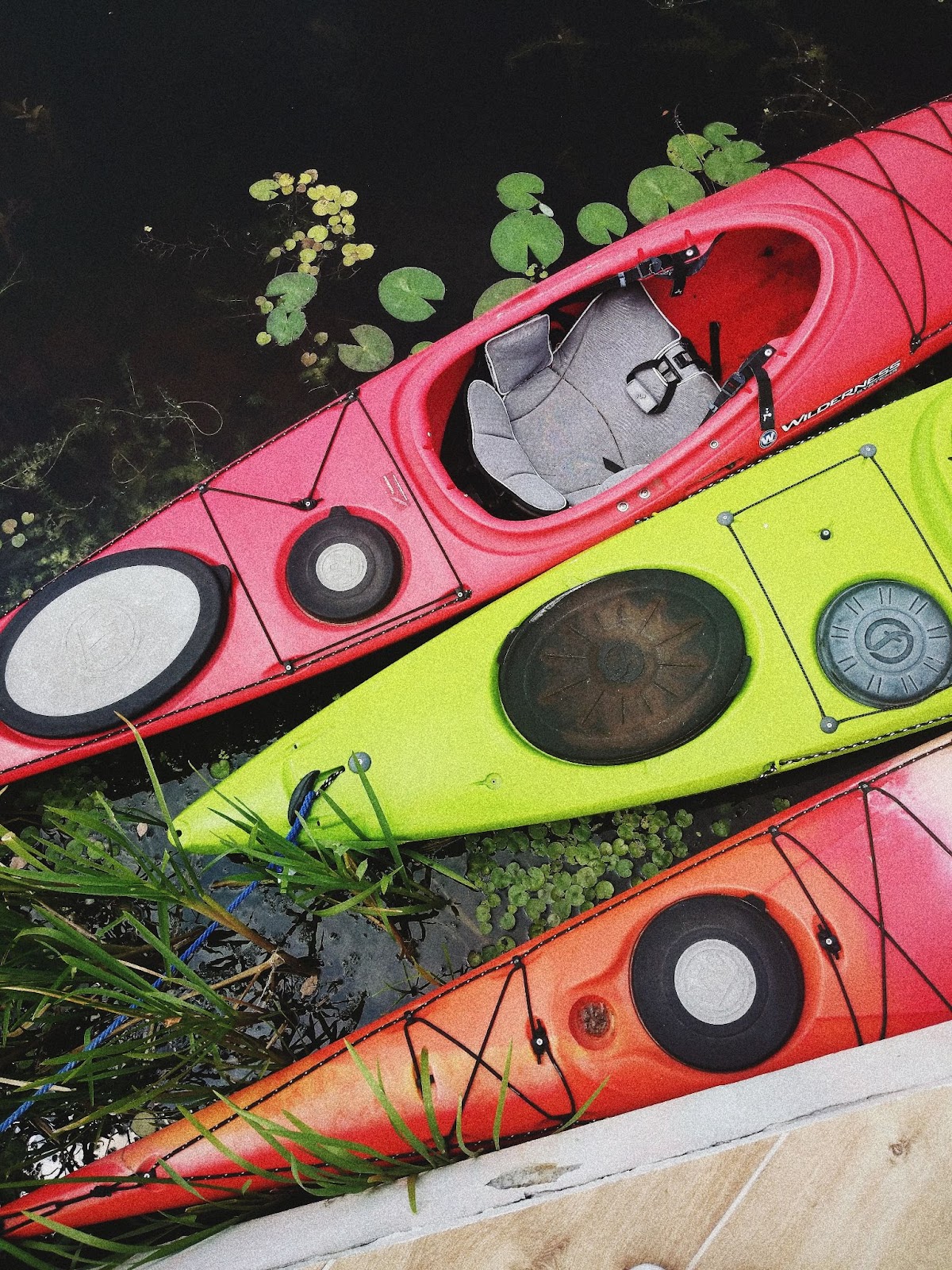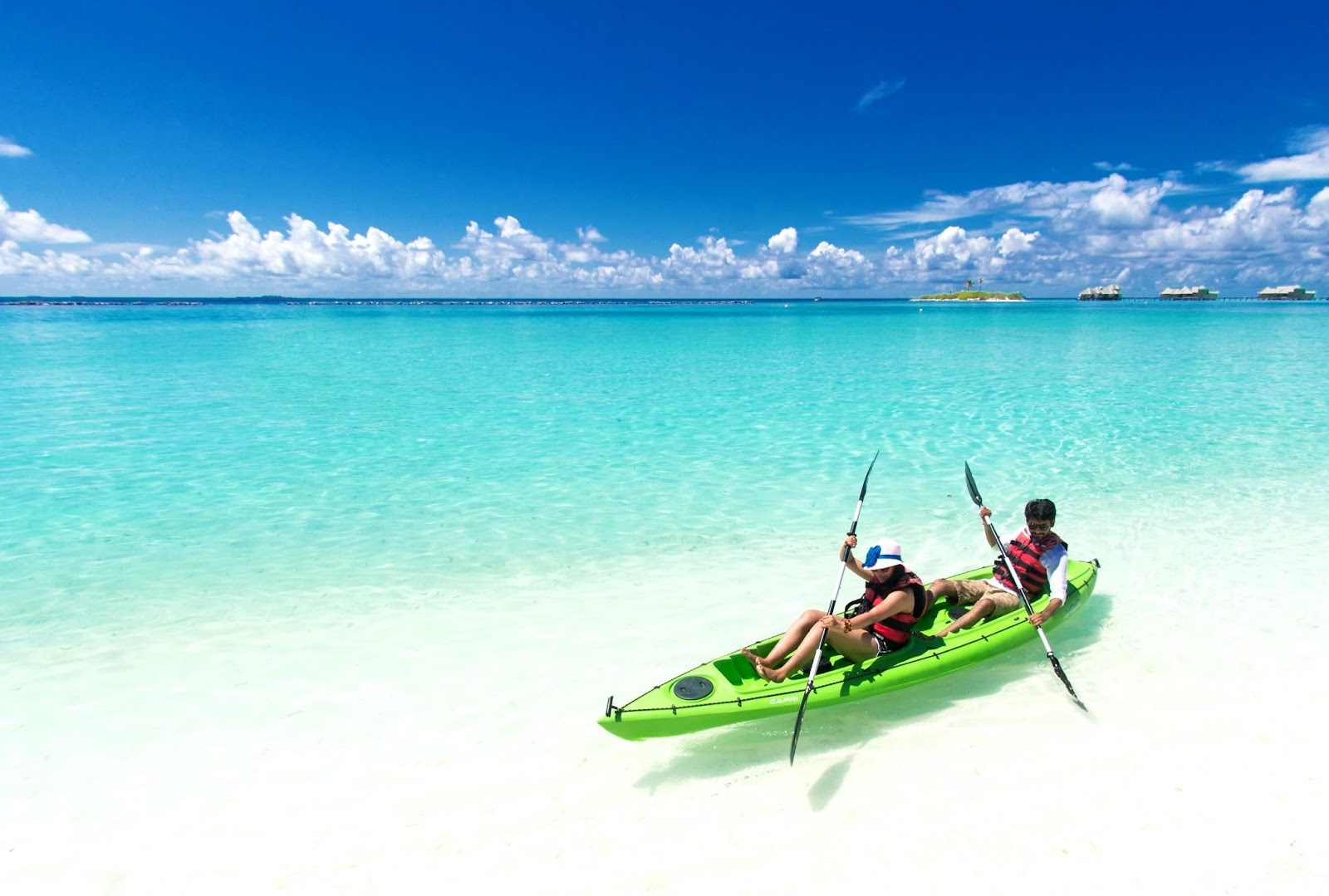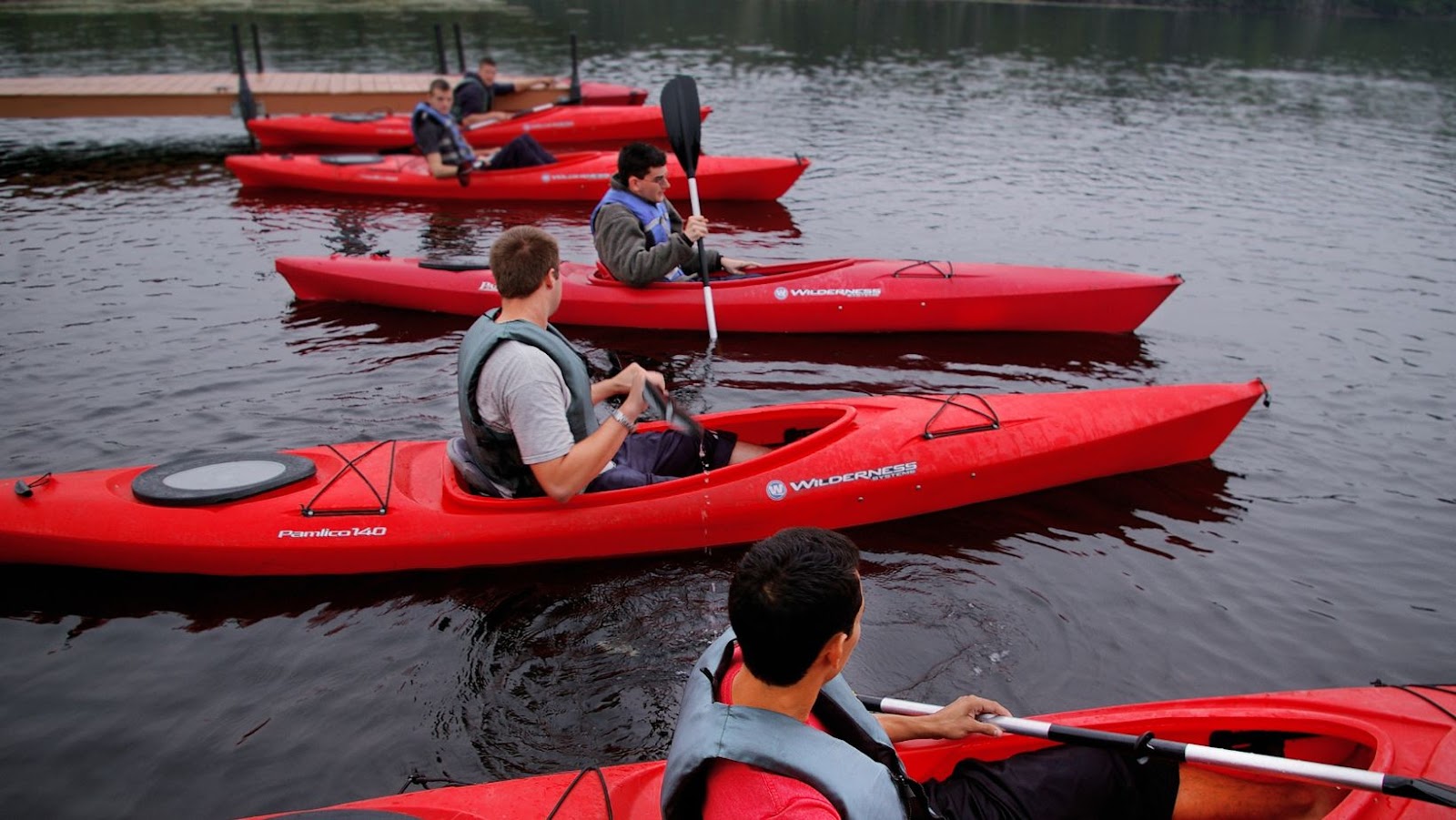Have you ever wondered how long of a paddle you should use for kayaking? Whether you’re a beginner or an experienced kayaker, ensuring the right paddle length can be key to your success. You don’t want to be too short, risking discomfort and lack of maneuverability, but you don’t want to be too long either!
We’ll help you find the perfect length for your needs.
Paddles come in a range of lengths designed to suit different uses and body sizes, including kayaking. Choosing the right paddle for your needs isn’t as difficult as you might assume, as long as you know where and how you plan on using it.
In this guide, we’ll discuss the various considerations when selecting a paddle for kayaking, such as length and material type. We’ll also provide information on what to look for when buying a paddle and how to care for it after purchase. Whether you’re an experienced paddler or taking your first foray into the world of kayaking, this guide should provide the knowledge you need to pick out the perfect paddle for your next adventure.
Types of Kayaks
When choosing a kayak, the first factor you should consider is the type of kayak that is right for you. Depending on the activity, there are different types of kayaks available including sit-in, sit-on-top, inflatables, touring kayaks and whitewater.
Sit-in kayaks are usually longer and narrower than sit-on top models and provide improved tracking in a straight line. They allow paddlers to remain dry by sealing off from surrounding water. Sit-on-top models provide greater stability on open water with a wider stance combined with slightly lower clearance from the surface resulting in higher drag. Inflatable kayaks are lightweight and compact for transport yet still maintain rigidity in the water. Touring models offer more speed with its sleek shape coupled with adequate cargo storage for extended paddles making them ideal for trips out at sea as well as lakes and inland waterways. Finally, whitewater kayaks are specifically designed to traverse turbulent rivers which require greater maneuverability versus other types of waters. Once you’ve chosen a type of kayak it’s important to select a paddle that is suited to your needs. While there is an array of sizes, shapes and materials available – length is an important factor – shorter paddles perform best in whitewater whereas touring requires a longer model up to 210 centimeters or more depending on paddle height and width preferences giving you one step closer to a successful trip!
How Long of a Paddle For Kayaking
Choosing the correct length of kayak paddle is essential for making your paddling experience safe and comfortable. Before you decide on a specific paddle length, consider the following factors.
1. Your height and arm strength: Generally, the longer your torso and the stronger your arms, the longer your paddle should be. A paddle should reach from your feet to your chin or slightly higher when seated in the kayak. This allows for maximum propulsive power and efficiency with each stroke.
2. Boat width: Narrower boats need a longer paddle to reach across in order to provide power with each stroke. Wider boats can accommodate a shorter paddle because you won’t need to stretch as far with each stroke.
3. Paddling environment: Open water paddles require more powerful strokes so a slightly longer length is recommended for this type of paddling, whereas moving waters like rivers usually call for shorter paddles due to more frequent maneuvering that needs to take place in white water environments or current-filled channels.
4. Kayak type: Outrigger canoes normally require larger paddles than folding kayaks which are typically smaller and lighter, so these vessels can typically use shorter lengths of paddles due to their lighter load capacity/weight ratio compared to outriggers as well as their decrease in size compared to sea kayaks designed for touring purposes on larger bodies of water such as lakes or oceans.
Paddles For Recreational Kayaking
When choosing a kayak paddle, recreational kayakers should consider the type of kayaking they’ll be doing and their individual size. Generally speaking a longer paddle will enable you to cover more distance for less effort, while a shorter paddle will give you greater control in fast-moving rivers or choppy conditions. There are two main categories of kayak paddles: straight shafts and bent shafts. A straight shaft has blades on both ends with no curve in it, giving you the most power when paddling. Bent shaft paddles have blades on both ends with a slight angle to them, making them great for lighter strokes and control in tight spaces or manoeuvres. Recreational kayaking usually requires mix of long and short strokes over distances middling between those used for racing and whitewater touring – measured typically between 200–300 metres at any one time. The best way to figure out which length of paddle works for you is to use the chart below as a reference point:
- Beginner/Intermediate: 240 – 260 cm
- Intermediate/Advanced: 250 – 270 cm
- Advanced/Expert: 260 – 290 cm

Remember that when choosing any type of water sports equipment, getting the right fit is key to achieving greater comfort and higher performance while out on the water!
Paddles For Touring Kayaking
Paddles for touring kayaking are usually either two- or four-piece designs, which measure in length from 210 to 230 cm. Manufacturers have a wide range of paddles designed for different kayaking styles, so it is important to consider a few factors when choosing the right paddle. Touring paddles should provide maximum efficiency and minimal fatigue during your extended outings in the water. Your choice will be based on your body size and the breadth of your shoulders, as well as the type of budget you set. Quality wood, plastic or glass fibre blades are all good options depending on their weight, strength and design. Four-piece paddles provide greater adjustment range than two-piece models and are convenient when travelling with your kayak. For heavier paddlers with broader shoulders, longer blades make up for more water displacement and exertion over long distances in open waters where manoeuvrability may not be as essential an attribute in comparison to river or lake runs. When touring longer distances or against incoming tides, shorter paddle cuts down on paddle fatigue by providing greater efficiency over time. If you plan on covering long open water distances or running tough rivers or rapids, lighter paddles with fiberglass blades offer improved power efficiency with less fatigue compared to heavier alternatives such plastic models which offer great durability but lack lightness needed for stamina over time.
Paddles For Whitewater Kayaking
Paddles for whitewater kayaking vary widely in length and design, allowing paddlers to customize their setup based on the type of water they’re navigating. Longer blades are used in more turbulent water and are designed to provide more power and stability with each stroke. Shorter paddles, conversely, offer better maneuverability for tighter spots and smaller waves.
River running is generally best done with a paddle that is somewhere between 200-210 centimeters long, depending on your height. For creeking or playing in holes or waves, it may be beneficial to go shorter, anywhere between 180-210 centimeters long. A shorter blade gives you the ability to make quicker decisions in tight spaces or winding rivers. If you’re getting into whitewater kayaking for the first time, it’s worth renting a paddle from a local outfitter before investing in one of your own. This way you can get a feel for what size works best for you before making a purchase. It’s also important to keep your blade connected with either webbing straps or a bolted connecting system; this way you never lose your paddle while running rapids!
Paddles For Fishing Kayaking
It is important to consider the type of kayak that you are using and the type of paddle that you plan to use when kayaking. For recreational fishing kayaks, a 6-foot or 7-foot long paddle is recommended. Longer paddles will give you more power and control over your kayak, while shorter paddles offer less power but greater maneuverability. It all comes down to personal preference. When in doubt, try several different lengths before purchasing one so that you can find the length that works best for you. For whitewater or sea kayaks, a longer paddle may be required for increased stability and control over the currents and waves. A good rule of thumb for these types of paddles is 8 feet or longer, depending on your size and the size of your kayak. Generally speaking, taller paddlers in larger boats may benefit from even longer paddle design choices.

Once you have a basic understanding of your height, weight and strength, it’s time to decide how long a paddle you need. We suggest a starting point of 220 cm for paddlers up to 6 feet tall weighing under 170 pounds; 230 cm for those over 6 feet tall and up to 190 pounds; 240 cm for those weighing more than 190 pounds but not more than 220 pounds and 250 cm if they weigh more than 220.
If you are using a kayak with an especially high seat or carrying a large load, consider making the paddle slightly longer.
Ultimately, your own preference will guide which length is right for you. We recommend trying out different lengths in the store before making your final purchase — if you still can’t decide, don’t be afraid to ask the knowledgeable staff at your local outfitter for advice.




No Comment! Be the first one.